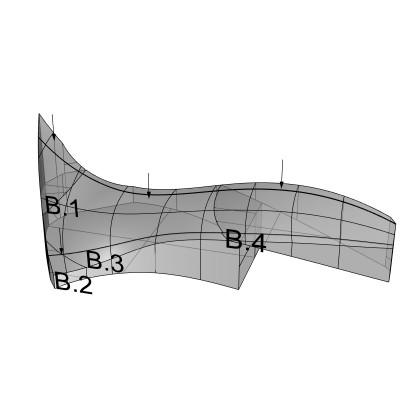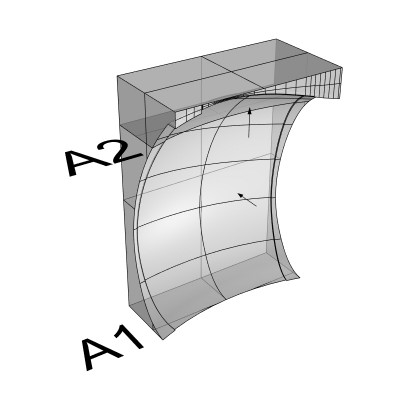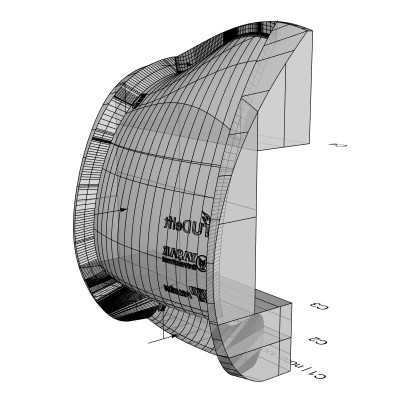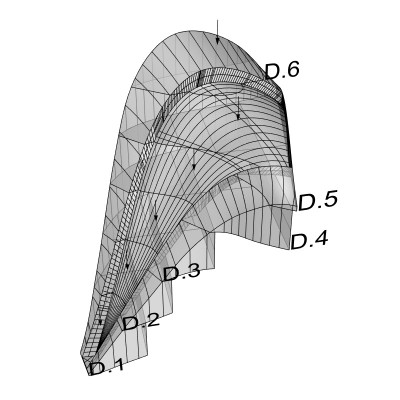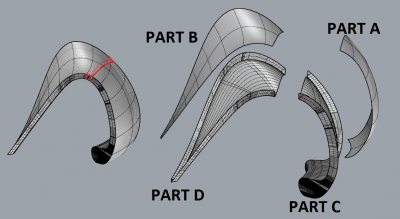The final molds are done!
There are four panels, thus four combined molds, A, B, C and D.
We followed the elephant logo for naming, From left to right and top to bottom. A – B forms the top part, C -D forms the bottom part.
The molds can be found here:
https://www.dropbox.com/sh/fhc6txh6m3n6zod/au8y99ix3g
The created molds have arrows for the milling direction and names:
